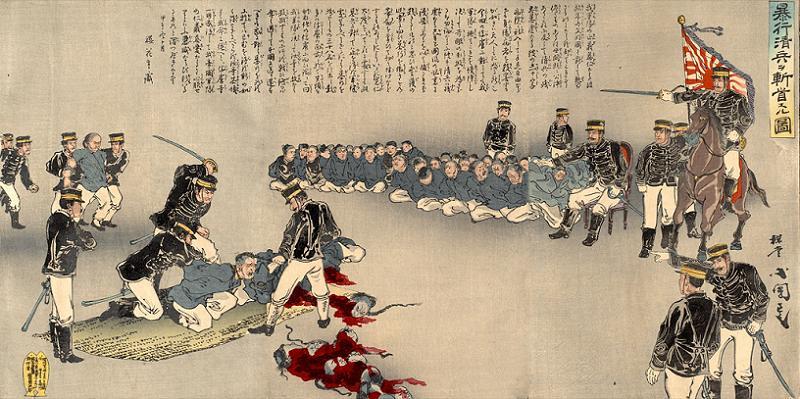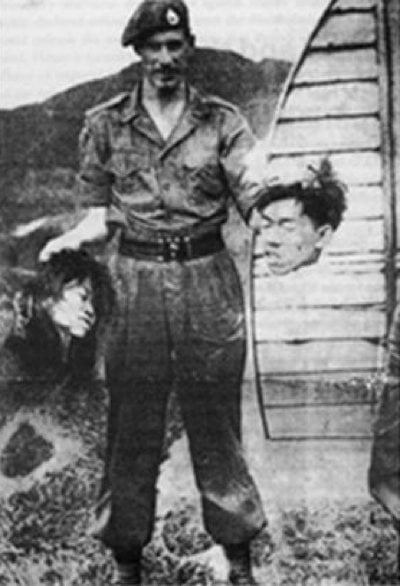Beheading As A Wartime Weapon

This 1894 illustration depicts Japanese soldiers beheading Chinese captives during the First Sino-Japanese War. Image Source: Wikimedia Commons
As enthusiastic as governments have always been about cutting off criminals’ heads, armies have been even more willing to behead captives.
Some of the earliest bas-reliefs depict all-powerful kings from Egypt and Assyria gathering up prisoners for decapitation. Heads have been taken as prizes in warfare since the invention of the sword, and few defeated armies throughout history have been spared.
In 1191, during the Crusades, Richard the Lionheart of England fought his way into control of the Muslim Saracen city of Acre, near Jerusalem. When subsequent negotiations with the Saracen leader, Saladin, hit an impasse, Richard showed he meant business by taking between 2,500 and 5,000 Muslim prisoners of war to the city’s walls and having their heads cut off in view of the enemy army. Negotiations resumed, and the Third Crusade ended with a mutually agreeable treaty.
After the Enlightenment, European societies got the idea that the gore and bloodshed of war was a grim duty, rather than a fun pastime, and the killing of captives declined. In the East, however, cutting off the heads of defeated enemies was still standard operating procedure until the 20th century.
The Japanese, who emerged from deep political isolation in the 1850s and immediately built up a modern colonial empire, put their traditional respect for the sword to the practical task of cleansing whole cities in occupied Korea during the First Sino-Japanese War in 1894-95. Beheading was later supplemented by the more efficient method of shooting, but slicing heads off of prisoners continued to the end of the Imperial period.

A British Royal Marine holding the severed heads of a young man and woman who were accused of supporting the Communist Party of Malaya in 1952. Image Source: Twitter
Western armies may have officially stopped beheading captives in the 18th century, but that enlightened attitude didn’t always make it down to the troops (see above). This type of violence is used for psychological effect by special operations forces around the world, such as the French Foreign Legion, which teaches its troops to leave decapitated enemy soldiers in the open for shock value.





